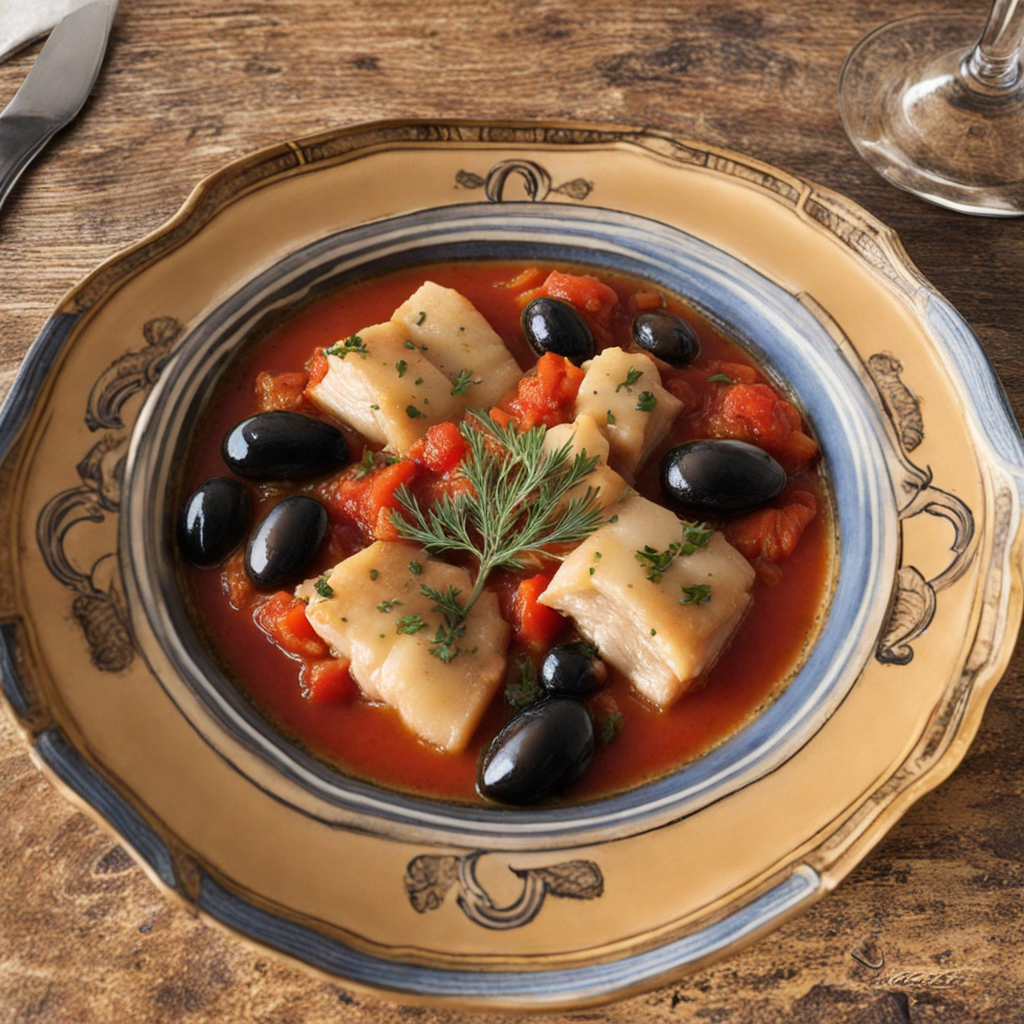Tarte Tropezienne
Tarte Tropezienne is a delightful dessert that hails from the sun-soaked shores of Saint-Tropez in the French Riviera, embodying the essence of its coastal charm. This sweet pastry consists of a soft, brioche-like bread that is beautifully golden and slightly sweet, providing a tender base that is ideal for holding the luscious filling. The dough is lightly dusted with sugar, offering a subtle crunch that contrasts wonderfully with the creamy interior. The bread’s airy texture makes each bite feel light and indulgent, inviting you to savor its comforting qualities. At the heart of Tarte Tropezienne lies its signature filling, a rich blend of creamy custard and whipped cream, often enhanced with a hint of orange blossom or vanilla. This exquisite mixture not only adds a layer of sweetness but also infuses the dessert with a fragrant aroma, reminiscent of Mediterranean gardens. The balance between the sweet brioche and the creamy filling creates a harmonious flavor profile that is both comforting and refreshing, making it a perfect treat for warm sunny days. Served chilled or at room temperature, Tarte Tropezienne is often enjoyed as a luxurious afternoon snack or a delightful end to a meal. Its beautiful presentation, usually adorned with a sprinkle of powdered sugar, makes it as visually appealing as it is delicious. Each bite transports you to the picturesque streets of Monaco, where the sea breeze mingles with the aroma of freshly baked pastries, making it a must-try for anyone eager to experience the sweet side of Mediterranean cuisine.
How It Became This Dish
Tarte Tropézienne: A Sweet Journey from Saint-Tropez to Culinary Fame Tarte Tropézienne is a delightful dessert that embodies the sun-kissed charm of the French Riviera, particularly the glamorous town of Saint-Tropez. This sweet treat, a creamy brioche filled with a luscious mixture of buttercream and pastry cream, is not only a staple of the region’s culinary repertoire but also a symbol of the cultural evolution and tourism explosion that has characterized the area since the mid-20th century. The Origins of Tarte Tropézienne The origins of Tarte Tropézienne can be traced back to 1955, when a Polish baker named Alexandre Micka opened a pastry shop in Saint-Tropez. Micka was inspired to create a unique pastry that would reflect the spirit of the region. The story goes that he devised a soft, round brioche topped with sugar and filled it with a creamy blend of buttercream and vanilla pastry cream. He named his creation “Tarte Tropézienne,” a nod to the town itself. Micka’s new dessert quickly became a local favorite, thanks in part to its introduction to the celebrity-packed world of Saint-Tropez. The town was already a magnet for artists, writers, and the wealthy elite, but it gained global fame in the mid-1950s when Brigitte Bardot starred in the film "Et Dieu… créa la femme" ("And God Created Woman"). The film showcased the stunning landscapes and vibrant lifestyle of Saint-Tropez, propelling the town into the limelight and with it, the Tarte Tropézienne. Cultural Significance As Saint-Tropez transformed from a quaint fishing village into a glamorous destination for the rich and famous, Tarte Tropézienne emerged as a culinary emblem of this change. The dessert became synonymous with leisure, pleasure, and the joie de vivre that characterized the social scene of the French Riviera. Visitors to Saint-Tropez sought out this dessert as a quintessential experience, a taste of the local culture that was both indulgent and emblematic of the region’s relaxed lifestyle. The Tarte Tropézienne also represents the blending of culinary traditions. Micka, of Polish origin, drew on his own background while incorporating elements of French pastry-making. The result is a dessert that reflects the diverse influences present in the area, as well as the broader narrative of French cuisine, which continually evolves by assimilating various cultural influences. Evolution Over Time As the years passed, Tarte Tropézienne remained popular, but it also evolved to meet changing tastes and dietary preferences. In the 1970s and 1980s, as the culinary landscape in France began to diversify with the rise of nouvelle cuisine and a greater emphasis on lighter, more health-conscious options, variations of Tarte Tropézienne started to appear. Bakers began experimenting with different fillings, incorporating fruits, chocolate, and even seasonal flavors, allowing the dessert to adapt to contemporary palates. The dessert's fame spread beyond Saint-Tropez, with pastry chefs across France and beyond attempting their own takes on the classic recipe. The rise of social media in the 21st century further propelled the Tarte Tropézienne into the global spotlight. Food bloggers and influencers began sharing their experiences with the dessert, showcasing its beautiful presentation and inviting followers to seek it out during their travels. This modern marketing strategy not only bolstered its reputation but also encouraged a new generation to embrace traditional French pastries. The Tarte Tropézienne Today In recent years, Tarte Tropézienne has solidified its status as a culinary icon. Many bakeries in Saint-Tropez continue to produce the original version, while others offer innovative twists on the classic. Some establishments have even taken to crafting Tarte Tropézienne in mini or individual-sized portions, making it easier for people to enjoy this indulgence on-the-go or share it among friends. In 2015, to commemorate the 60th anniversary of Tarte Tropézienne, a festival was held in Saint-Tropez, celebrating the dessert with tastings, workshops, and contests. This event highlighted the cultural significance of the Tarte Tropézienne, bringing together locals and tourists who share a passion for this sweet creation. The Tarte Tropézienne has also found its way into popular culture, appearing in cookbooks and television shows dedicated to French cooking. Its reputation as a must-try dessert in the French Riviera has solidified its place in the hearts of many food enthusiasts around the world. A Symbol of French Gastronomy Ultimately, Tarte Tropézienne encapsulates much more than just a delicious pastry. It represents a moment in time when Saint-Tropez emerged as a cultural and social hub, attracting a plethora of artists, filmmakers, and celebrities. The dessert’s ability to adapt while retaining its core essence echoes the broader narrative of French cuisine, which thrives on innovation while respecting tradition. Moreover, Tarte Tropézienne is a testament to the power of food in storytelling and cultural exchange. It captures the spirit of a community that has welcomed visitors from all corners of the globe, inviting them to indulge in a sweet piece of its history. As culinary tourism continues to grow, Tarte Tropézienne serves as a delicious reminder of the rich tapestry of flavors and stories that define French gastronomy. In conclusion, Tarte Tropézienne is more than just a dessert; it is a journey through time, culture, and taste—a delightful embodiment of the enchanting lifestyle of Saint-Tropez. Whether enjoyed at a seaside café or crafted in a home kitchen, each bite of Tarte Tropézienne is a taste of history, a celebration of innovation, and an invitation to savor the sweet moments of life.
You may like
Discover local flavors from Monaco







